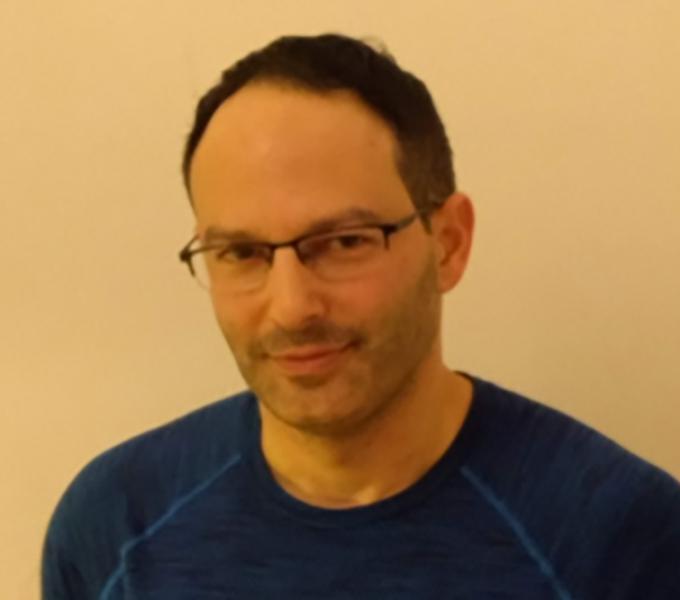- Bsc Psychology
- Bsc Biology (Honors)
Education & Training
We are building (and using) new technologies to study and reverse brain disease.
The Shemesh group is creating new technologies to understand and treat brain disease, a field we call “Counter Disease Engineering”. There are over 400 diseases of the nervous system, and we keep falling short of understanding their causes. What delays us, is the lack of adequate research technologies. In recent years, we have seen an explosion in tools that aim at understanding computation in the brain. These tools include optogenetic molecules, calcium or voltage sensors, single cell sequencing tools, novel microscopies, etc. However, as powerful as these tools are, in their current form they are not enough to unveil the seeding cellular and molecular events that culminate in brain pathogenesis.
Our group is therefore taking the technological approach to understanding diseases of the nervous system: we are creating tools that enable tracking the etiology of brain disease. Among these tools are sensors for the viability states of cells (is a cell healthy, necrotic or apoptotic?), actuators that switch brain cells and brain regions from healthy to a diseased state and back, novel animal models for basic research and drug screening, and devices for interfacing with the nervous system and repairing it. To build the tools, we combine experience in protein and genetic engineering, nanotechnology, cell biology, neuroscience, computational biology and electrical engineering. We encourage independent, radical, dogma-shattering thinking, and collaborations among peers and other groups. Group members can choose whether they want to focus on building technology, or on solving a scientific question using this technology. The technologies our group creates can be applied to other research fields such as cancer, immunology and infectious diseases. No prior expertise in tool building or biology is needed, just passion and an open mind.
Precision calcium imaging of dense neural populations via a cell body-targeted calcium indicator.
Shemesh OA.*, Linghu C*, Piatkevich KD*, Goodwin D, Freifeld L, Gritton HJ, Romano MF, BenSussen S, Tseng HA, Siciliano CA, Gupta I, Pak N, Young YG, Park W, Keating A, Tye K, Tolias A, Han X, Ahrens M and Boyden ES. †. Accepted. Neuron 2020 Jun 26. doi:10.1016/j.neuron.2020.05.029.
Temporally precise single-cell-resolution optogenetics.
Shemesh OA.*, Tanese D*, Zampini V*, Linghu C, Piatkevich KD, Ronzitti E, Papagiakoumou E, Emiliani V† and Boyden ES. †. Nature Neuroscience 2017 Dec;20(12):1796-1806. PMID: 29184208.
* Equal contribution
Population imaging of neural activity in awake behaving mice in multiple brain regions.Kiryl D Piatkevich, Seth Bensussen, Hua-an Tseng, Sanaya N Shroff, Violetta Giselle Lopez-Huerta, Demian Park, Erica E Jung, Or A Shemesh, Christoph Straub, Howard J Gritton, Michael F Romano, Emma Costa, Bernardo L Sabatini, Zhanyan Fu, Edward S Boyden, Xue Han.
Accepted. Nature.
Membrane-targeted delivery of nitrogen vacancy nanodiamonds.
Shemesh OA.*, Gupta I*, Gaathon O, Wassie A, Foy C, Chang JB, Walcott A, Kodandaramaiah S, Wickersham I, Englund D† and Boyden ES. †. Under Revision.
* Equal contribution
A robotic multidimensional directed evolution approach applied to fluorescent voltage reporters. Piatkevich KD, Jung EE, Straub C, Linghu C, Park D, Suk HJ, Hochbaum DR, Goodwin D, Pnevmatikakis E, Pak N, Kawashima T, Yang CT, Rhoades JL, Shemesh OA, Asano S, Yoon YG, Freifeld L, Saulnier JL, Riegler C, Engert F, Hughes T, Drobizhev M, Szabo B, Ahrens MB, Flavell SW, Sabatini BL, Boyden ES. Nature Chemical Biology. 2018 Feb 26. doi: 10.1038/s41589-018-0004-9. PMID: 29483642
Modulation of nitrogen vacancy charge state and fluorescence in nanodiamonds using electrochemical potential. Karaveli S, Gaathon O, Wolcott A, Sakakibara R , Shemesh OA, Peterka DS, Boyden ES, Owen JS, Yuste R, Englund D. Proc Natl Acad Sci U S A. 2016 Apr 12;113(15):3938-43. PMID: 27035935
Rescue of tau-induced synaptic transmission pathology by paclitaxel. Erez H*, Shemesh OA* & Spira ME. Front Cell Neurosci. 2014 Feb 10;8:34.
PMID: 24574970
* Equal contribution
Rescue of neurons from undergoing hallmark tau-induced Alzheimer's disease cell pathologies by the antimitotic drug paclitaxel. Shemesh OA & Spira ME. Neurobiol Dis. 2011 Jul;43(1):163-75. PMID: 21406229
Hallmark cellular pathology of Alzheimer’s disease induced by mutant human-tau expression in cultured Aplysia neurons. Shemesh OA & Spira ME. Acta Neuropathologica 2010 Aug;120(2):209-22. PMID: 20422200
Paclitaxel induces microtubule polar reorientation and impaired organelle transport in neurons – implications to taxane-induced neuropathy. Shemesh OA & Spira ME. Acta Neuropathologica. 2010;119(2):235-48. PMID : 19727778
Tau-induced microtubules reorientation and displacement leads to axonal traffic jams and neurodegeneration. Shemesh OA., Erez H., Gizburg I., Spira ME. Traffic, 2008 Apr;9(4):458-71. PMID: 18182010
